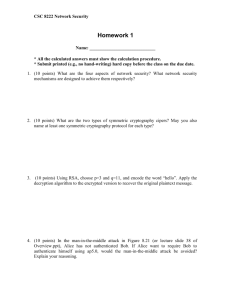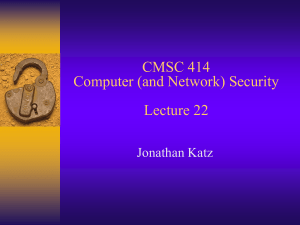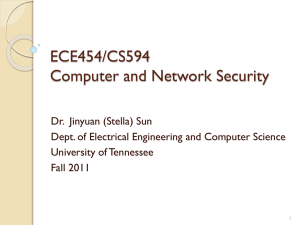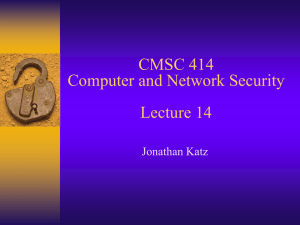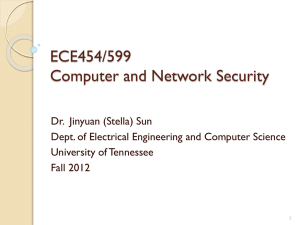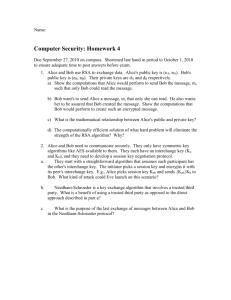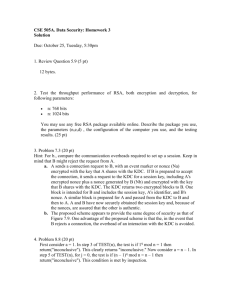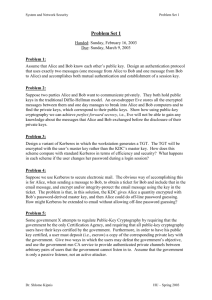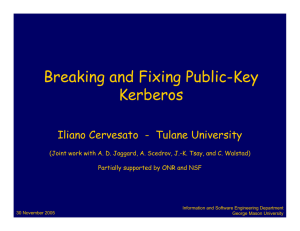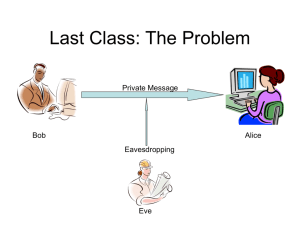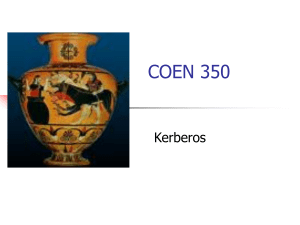Network Authentication Standards:
advertisement
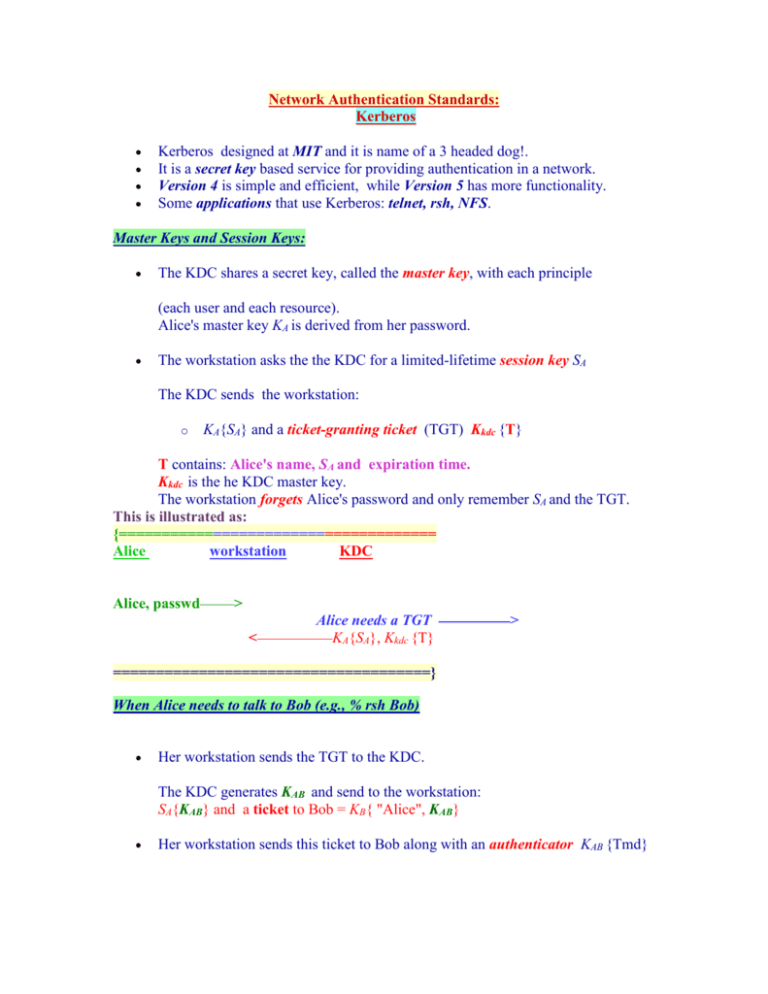
Network Authentication Standards:
Kerberos
Kerberos designed at MIT and it is name of a 3 headed dog!.
It is a secret key based service for providing authentication in a network.
Version 4 is simple and efficient, while Version 5 has more functionality.
Some applications that use Kerberos: telnet, rsh, NFS.
Master Keys and Session Keys:
The KDC shares a secret key, called the master key, with each principle
(each user and each resource).
Alice's master key KA is derived from her password.
The workstation asks the the KDC for a limited-lifetime session key SA
The KDC sends the workstation:
o
KA{SA} and a ticket-granting ticket (TGT) Kkdc {T}
T contains: Alice's name, SA and expiration time.
Kkdc is the he KDC master key.
The workstation forgets Alice's password and only remember SA and the TGT.
This is illustrated as:
{=====================================
Alice
workstation
KDC
Alice, passwd
>
<
Alice needs a TGT
KA{SA}, Kkdc {T}
>
=====================================}
When Alice needs to talk to Bob (e.g., % rsh Bob)
Her workstation sends the TGT to the KDC.
The KDC generates KAB and send to the workstation:
SA{KAB} and a ticket to Bob = KB{ "Alice", KAB}
Her workstation sends this ticket to Bob along with an authenticator KAB {Tmd}
where Tmd is the time of day to prove to Bob that she knows KAB
(Kerberos allows up to 5 minutes skew between clocks).
Bob sends back KAB {Tmd+1} to prove that he is indeed Bob
(since he must knows KB to find out KAB ).
Thereafter, messages between Alice and Bob my be encrypted and integrity
protected.
This is illustrated as:
{=========================================
Alice
workstation
KDC
Bob
rsh Bob
>
Alice wants Bob, TGT
<
>
SA{"Bob", KAB , ticket to Bob}
ticket to Bob = KB{ "Alice", KAB}, KAB {Tmd}
>
<
KAB {Tmd+1}
==========================================}
Replicated KDC
To avoid a single-point-of-failure and a performance-bottleneck of using
one KDC, Kerberos keeps a master KDC and a number of slave KDCs.
All updates are done at the master KDC database and periodically the
slaves down load the master database (the database consists of the
principles names and master keys encrypted with the KDC master key).
Most KDC operations are read-only and can be performed by any KDC
replica.
Key Version Numbers
If a non-human resource (e.g., a file server) changes his master key, and some
one
has a ticket for that resource with an old key, the ticket will no longer be valid
(most tickets expires in about 21 hours).
Kerberos assign to each key a version number and resources should remember
several versions of their own key.
In tickets, key number version is sent so that it can be known which key to use.
For humans, key version number is a problematic since Kerberos decided not to
add further complexity to the user interface. If a person changes his master key
and tried to login to a slave KDC before it has a chance to download the current
key database, the person will not be able to login with new password!
Encryption for Privacy and Integrity
There is no standard mechanism for protecting both the privacy and integrity of a
message with a single cryptographic pass.
Therefore, Kerberos did a modified version of CBC called
Plain Cipher Block Chaining (PCBC) as shown:
It has the property that modifying any ci will result in garbling all blocks from mi to the
end.
(Kerberos puts some recognizable data at the end, e.g., 1111).
Encryption for Integrity only
Kerberos V4 uses checksum function on the session key concatenated with the message,
but in V5 they use one of the standard message digest functions.
Network Layer Addresses in Tickets
In V4, when Alice requests a TGT or a ticket to Bob, the KDC puts her 32-bit
IPv4 address inside the ticket!
This restricts Alice to "legitimately" allow something to act on her behave, thus
V4 does not allow delegation.
Delegation
V5 explicitly allows delegation by allowing Alice to ask for a TGT ticket with a
network layer address different from hers (also she can ask for multiple or no
address).
She can then give this ticket to Bob (or anyone that matches the network address)
along with the corresponding session key.
Bob can then uses this TGT to obtain tickets for the needed resources.
Ticket Lifetime
In V4 tickets is valid for 21 hours.
In V5, it can be issued for any duration and it can be renewable and postdated.
